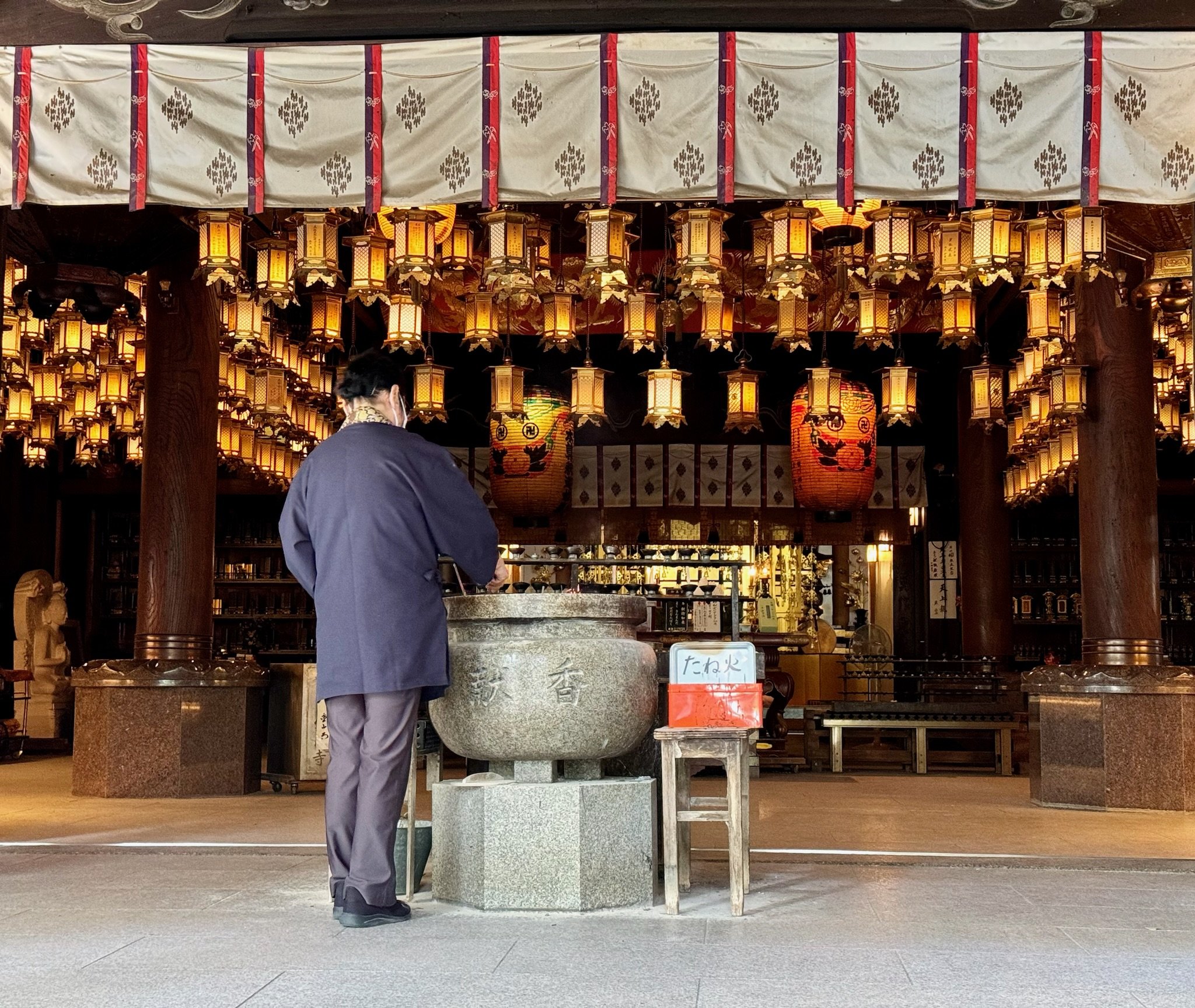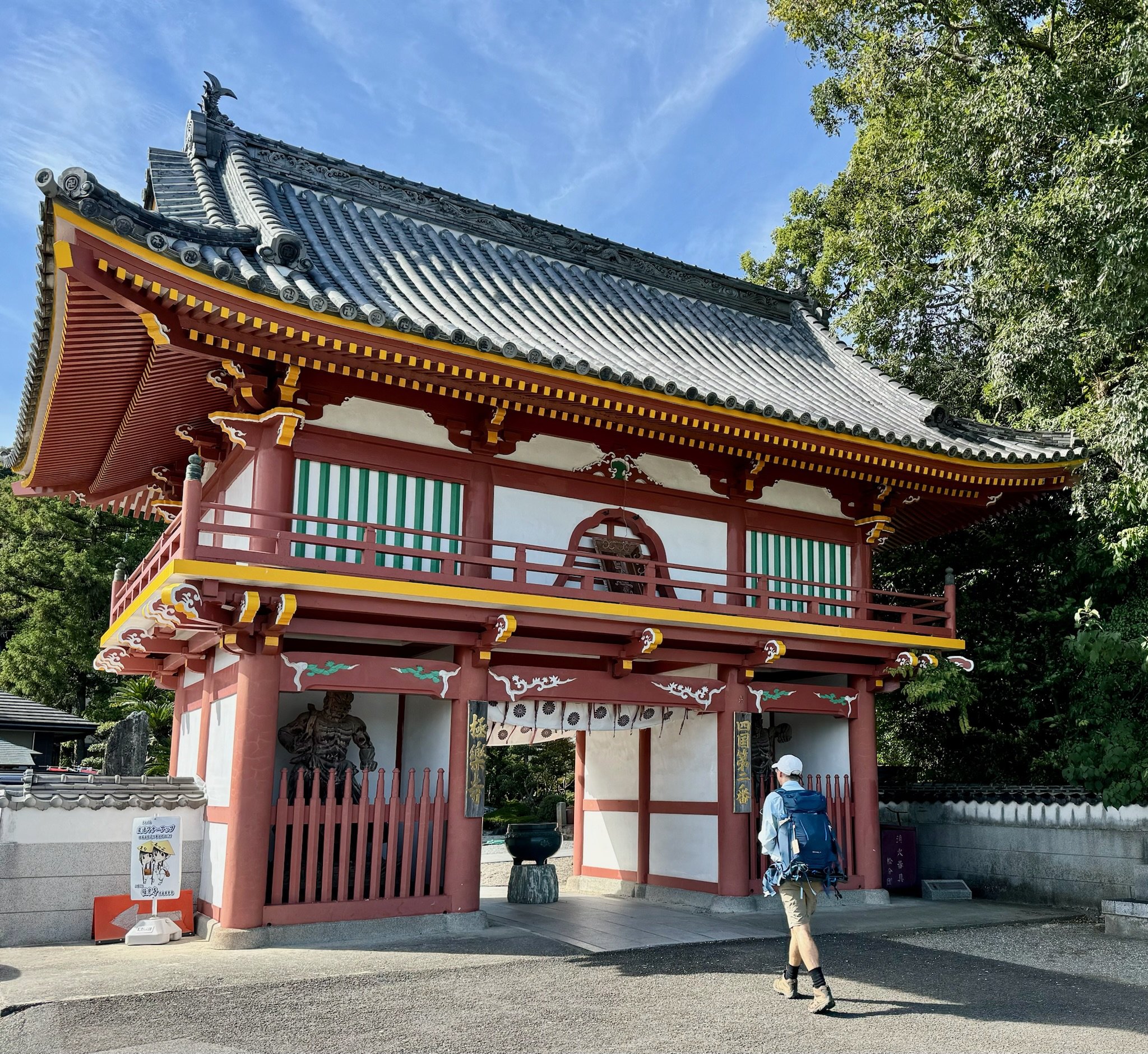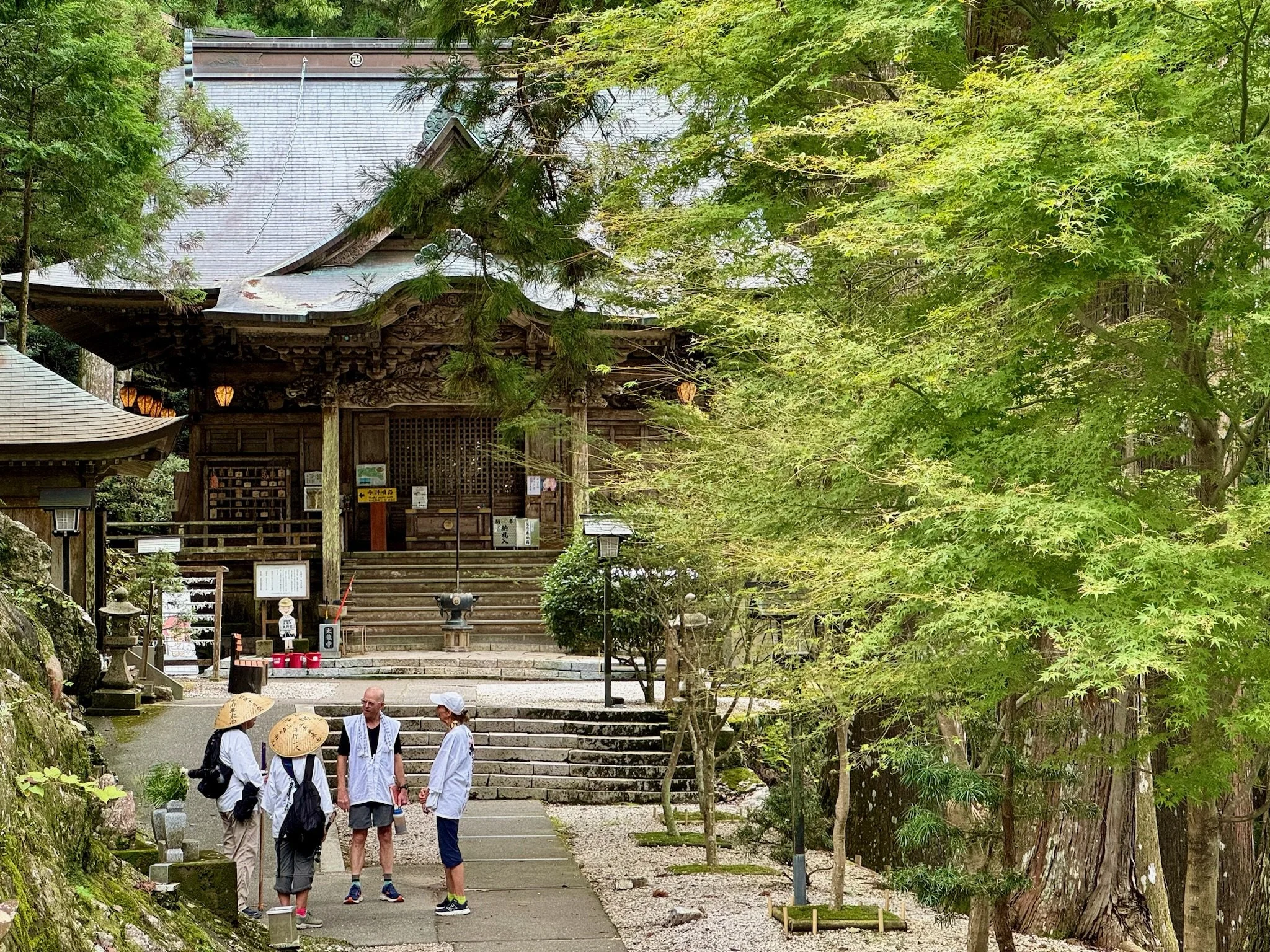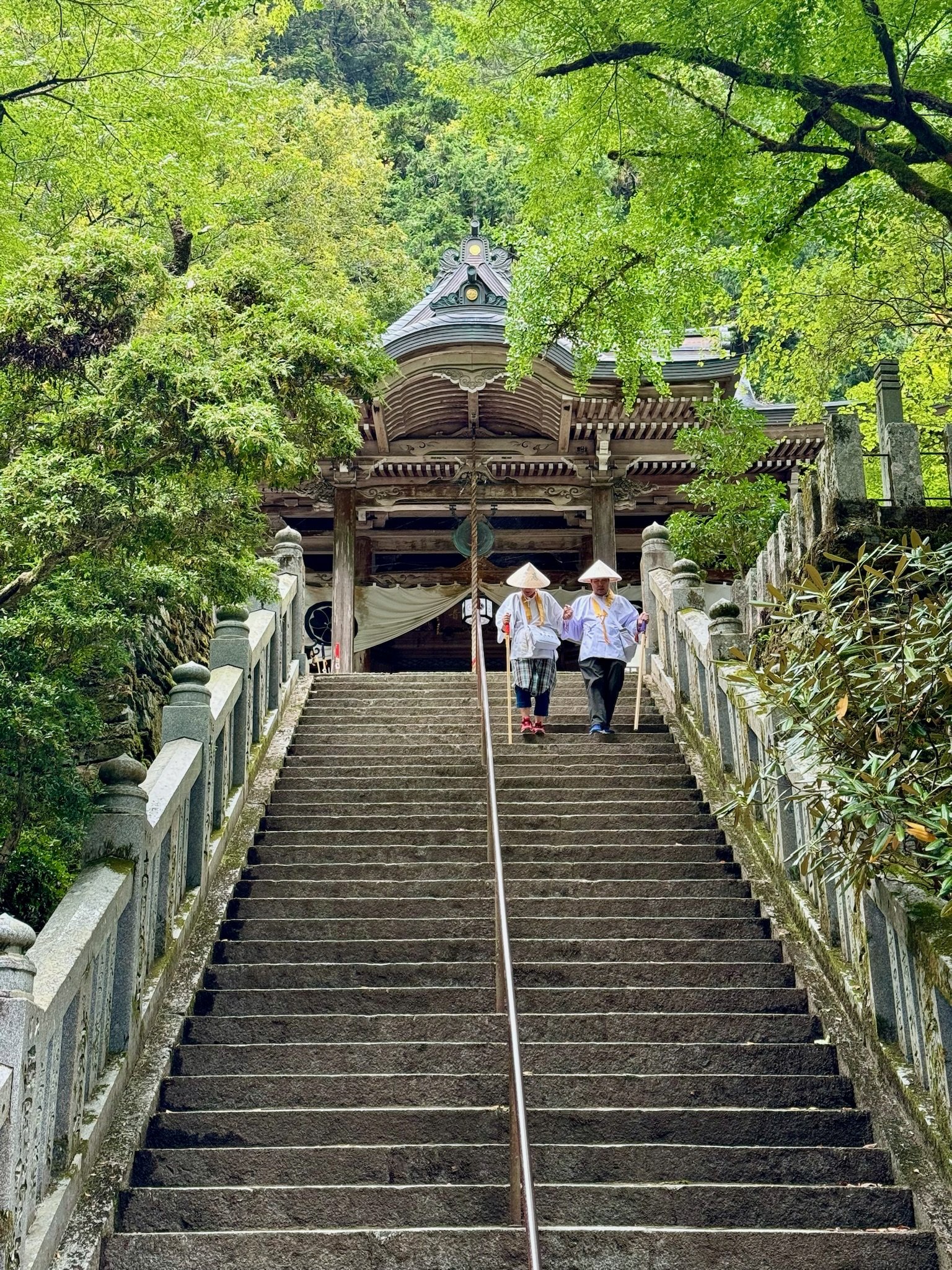A Taste of the Shikoku Pilgrimage
Background to Shikoku Pilgrimage
Shikoku is the fourth largest island of Japan. It’s located south-west of Osaka. Using Japan’s super-efficient public transport system, you can reach it in a couple of hours from either Osaka or Kyoto.
The interior of Shikoku is quite undeveloped, due to its mountainous terrain and dense forests. Most of Shikoku’s population lives in coastal towns scattered along the northern coast. The towns don’t hold much attraction for walkers, but the interior certainly does.
One of the best known figures in Japan’s history is a monk called Kobo Daishi (also known as Kukai), who was born on Shikoku island in 774. Kobo Daishi made huge contributions to Japanese culture and society, including in fields as diverse as engineering, calligraphy and the Japanese alphabet. However, what Kobo Daishi is most remembered for is founding Shingon Buddhism, which today is the largest school of Buddhism in Japan.
At various times during his lifetime, Kobo Daishi sought enlightenment through meditation in remote parts of Shikoku. He and subsequent followers established temples in those places and over the centuries many of those temples grew and prospered. Visiting those temples became a goal of adherents to Shingon Buddhism and by the 1600’s a 1200km pilgrimage route that visited 88 of the temples had become established.
So, for over 300 years, pilgrims have come to Shikoku. Some walk the full route, others undertake a segment. Today, some pilgrims travel on charter buses, others on motor-bikes. There’s no rule book governing the Shikoku pilgrimage.
Why walk the Shikoku Pilgrimage?
If you’re a follower of Shingon Buddhism, then clearly the walk is a true pilgrimage. However, for those of us who are not followers, I think the reasons for doing the walk (or, in the case of most of us, doing part of the walk) are as follows:
Witnessing what is still very much a live pilgrimage. I’ve walked on a few pilgrimage paths around the world. On this one I felt a greater sense of being on a vibrant, living pilgrimage path than I have on those others. Some veterans of the caminos that lead to Santiago de Compostela might take issue with me here and the Camino Frances certainly carries more walkers. But on the caminos it’s very hard to tell how many walkers are adherents to catholicism undertaking the walk in pursuit of a religious goal.
On the Shikoku pilgrimage, pilgrims (known as Henro) dress in a distinctive attire that includes a white cloak, a conical hat, a satchel and a wooden staff. When visiting any of the 88 temples, you will almost always share the experience with henros.
Insights into Buddhism. You can’t possibly walk a segment of the Shikoku pilgrimage and (literally) follow in the footsteps of numerous henro without pondering the key precepts of Buddhism and Shingon Buddhism. Pilgrims and temple officials are always happy to share some of the teachings of their religion and many of the temples include English language explanations. Another immersive experience that provides learning opportunities is staying overnight at a shukubo, accommodation attached to a temple which is similar to a ryokan. When staying at a shukubo, you are invited to join morning or evening services.
The beauty and aura of the temples. The architecture, sculptures, statues, decorations and precinct gardens combine to create havens of peace and beauty. Particularly, those temples located in remote forest areas where ancient teak or maple trees line the long stone staircase entrance and bonsai garden beds accompany the temple structures. Many of the temples date back over 1,000 years and usually that extraordinary history of worship and devotion can be sensed.
The mountainous terrain and forest. As mentioned earlier, the interior of Shikoku is rugged and densely vegetated. While the route of the Shikoku pilgrimage broadly parallels the island’s coastline, it makes regular forays to temples located further inland. So, walking the Shikoku pilgrimage provides avid walkers with plenty of opportunities to tackle some climbs and walk in pristine forests.
Hospitality and cuisine. For some, this reason will be top of the list. Japanese are wonderfully hospitable. Whether it be the passer-by who offers to help a clearly disoriented traveller (me, frequently) or the inn-keeper that goes the extra mile. And it’s guidance or help provided with courtesy and charm. This extends to the cuisine you experience on the Shikoku. Most accommodation, particularly in the more remote locations, includes the evening meal. Fish, rice and soup are the staples but there is much variation, with sashimi, tempura, pickled vegetables, hotpot often featuring. Dishes tend to be small but there are plenty of them. Sometimes the experience feels like a degustation one!
Our taste of the Shikoku pilgrimage
We did an 8 day “sampler” of the Shikoku, organised by a walk operator. Our route took us to three of Shikoku’s four prefectures - Tokushima, Kagawa and Ehime. We visited 20 of the 88 temples and walked about 100km.
Our trip started with a happy coincidence. Alaskans Pam and Bonnie that we’d met and bonded with on the Kumano Kodo a week earlier were commencing their Shikoku sampler on the same day as us! Pam and Bonnie were doing 10 days on the path but the first four days overlapped with us.
Our first day of walking was 15 October. A fair way into Autumn we’d thought when planning our trip, but the reality was that it still felt pretty summery with 27C and quite a bit of humidity.
The first night’s accommodation was at Anraku-ji, a “shukubo” pilgrim’s lodging attached to a temple. After dinner, we and the dozen or so other guests were invited to participate in a Buddhist ceremony that took place in the inner sanctum of the temple. The ceremony involved chanting and a moving candle ritual in memory of loved ones no longer with us.
The following days involved a combination of public transport, taxis and old-fashioned walking to allow us to experience temples and countryside representing almost half of Shikoku. Ours was not a traditional pilgrimage experience of waking in the morning and walking from the front door of one accommodation to the front door of the next night’s accommodation. Rather we jumped around the island, with a view to seeing the most interesting temples and walking the most attractive paths.
It has to be said that at times it felt like we were participants in Race Around the World. On Day 3, for example, we had an hour’s taxi-ride in the morning to the start of the day’s walk. The day’s walking ended at Temple 21 Tairyu-ji (The Grand Dragon Temple), from where we descended 800m out of the mountains via a cable-car, then caught a bus and then a train to get to our accommodation in Tokushima.
On the walking front, you need to be prepared for some town walking. This is unavoidable because a number of the temples are located near the coast amongst Shikoku’s townships. The walking here can be a bit uninspiring, although it does provided insight into the living environment of residents of such regional towns. However, on the sampler walk that we did, on most days the vast majority of walking is amongst the hills and mountains of the hinterland.
As always on popular multi-day walks, there were opportunities for socialising with fellow walkers. As already mentioned, for the first four days we had the wonderful company of our Alaskan friends, Pam and Bonnie. It was with sadness that we farewelled them in Kotohira on the morning of Day 5. We were very envious of their 10 day itinerary as the extra days allowed them do an udon noodle class in Kotohira and to venture into the spectacular Iya valley. In the latter half of our walk, we shared the trail and lodgings with a charming English couple, Pat and Chris. They had walked the Nakasendo Way on a previous trip to Japan and their descriptions served to build our anticipation for our third and final walk of this trip.





